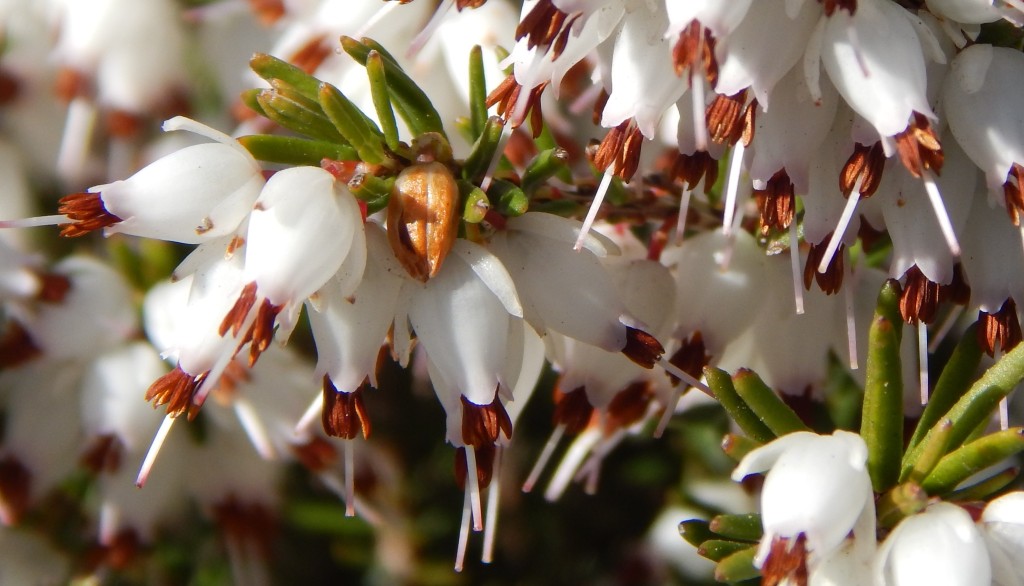
[132] Erica Species, Heath or Heather
Introduction
Erica carnea, Spring Heath, and Erica lusitanica, Portuguese Heath, are two similar species often just called Heather or Heath. They are cultivated as garden plants as are many other species of Erica and several hybrids.
Erica carnea is also called Winter Heath or Alpine Heath. Erica lusitanica is also called Spanish Heath.
Calluna vulgaris is a very similar species recently removed from the genus Erica, which still has about a thousand species. (There is only one species in Calluna.) Calluna vulgaris may be called (Common) Heather or Ling.
For most purposes I will treat these three species (and others) together.
Taxonomy
Kingdom – Plants
Division – Vascular Plants
Class – Angiosperms (Flowering Plants)
Order – Ericales
Family – Ericaceae
Subfamily – Ericoideae (Rhododendron, Heathers and others)
Tribe – Ericeae
Genus – Erica
Scientific Name – Erica carnea, Spring Heath
Erica lusitanica, Portuguese Heath
There are hundreds of cultivars and hybrids available and hundreds of similar species.
Name
Heather, from Old English, and Ling, from Old Norse, are words for the plant. Heath may be cognate but also has the meaning of open moorland.
Erica is the Latin name for these plants probably from the Ancient Greek ereike. Carnea, from the Latin, means flesh-pink. Lusitanica is the Modern Latin name for Portugal and Spain.
Calluna probably comes from the Greek kalluno meaning to beautify or sweep clean, from its use in household brooms.
Description
Species within the genus Erica are normally small perennial shrubs although specimens in gardens may be too small to be seen as shrubs. They are evergreen and have tiny, needle-shaped leaves that may not be noticed when the plants are in flower.
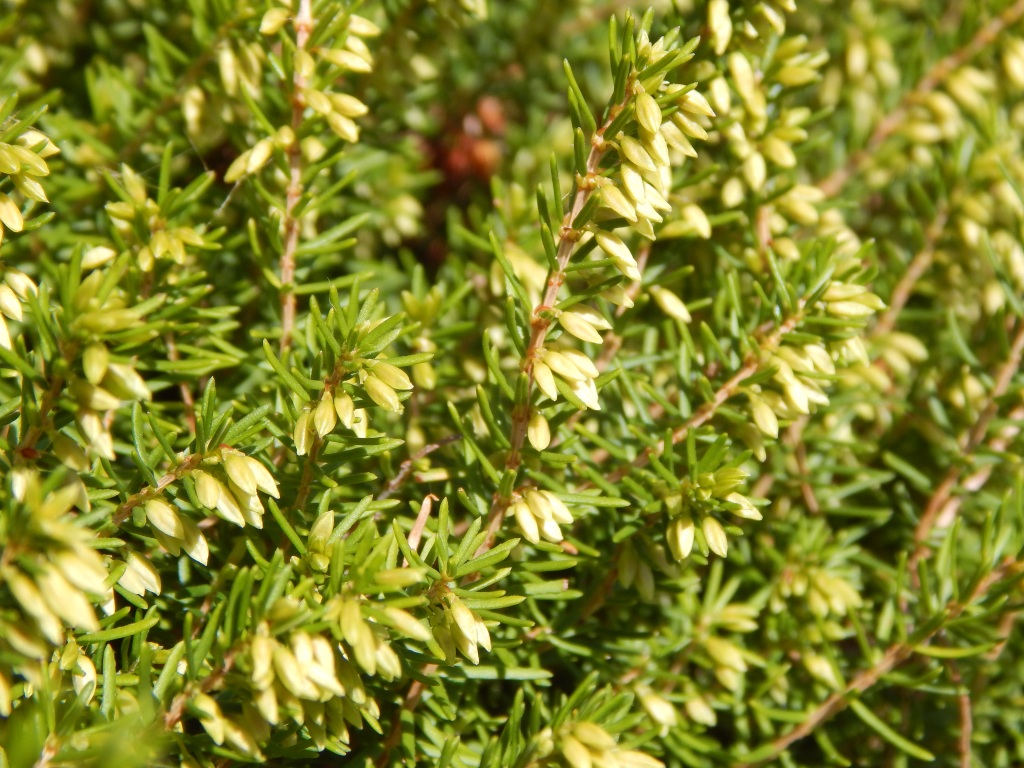
The small, bell-shaped flowers grow in inflorescences with lots of tightly bunched racemes, which can cover the whole plant.
- Erica carnea is very low, up to about twenty centimetres in height, and may spread as a ground cover plant. Its flowers are usually dark pink or purple. It flowers in spring, sometimes in late winter when still covered in snow. It has over a hundred cultivars differing in flower and leaf colour.

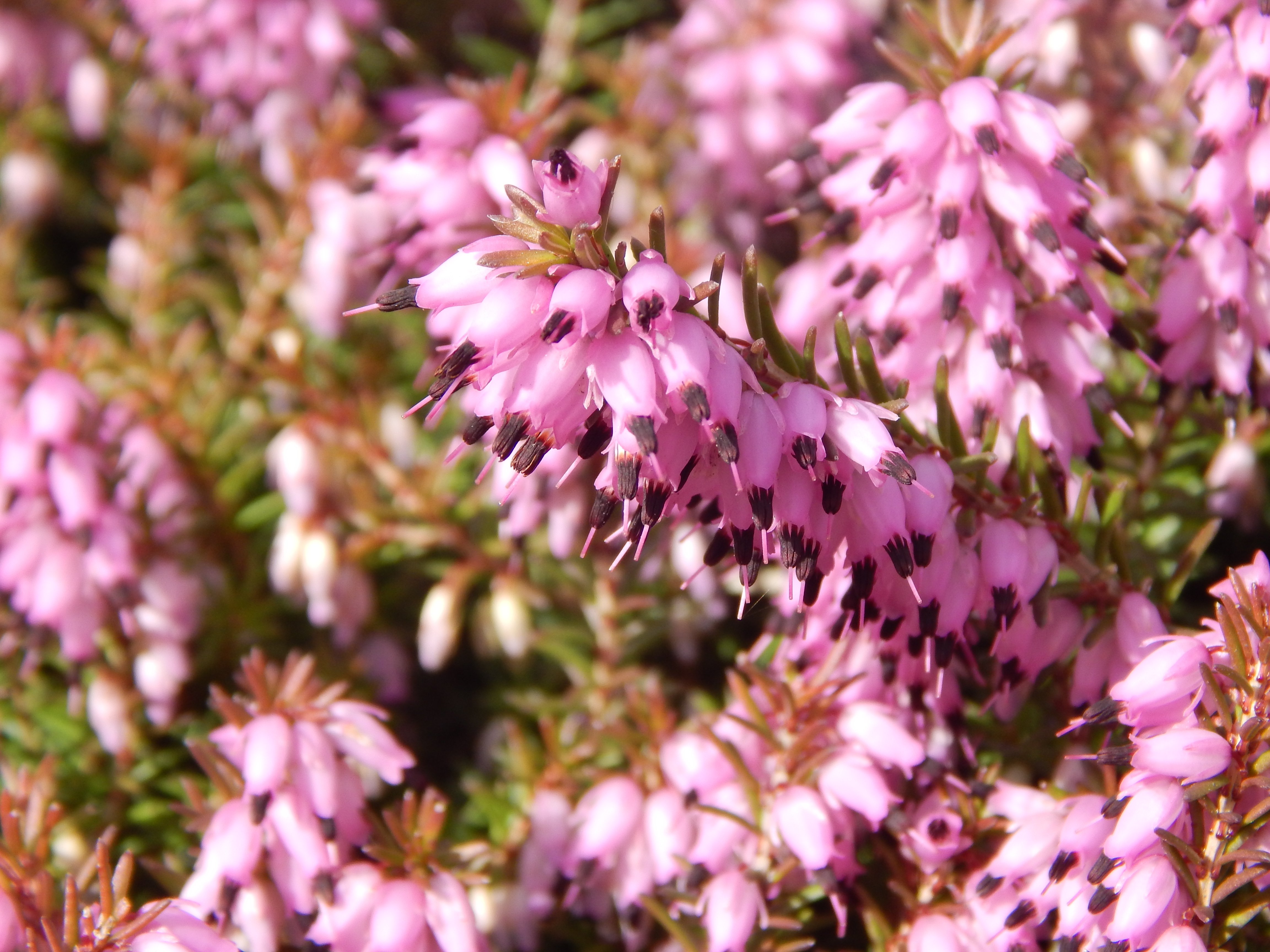

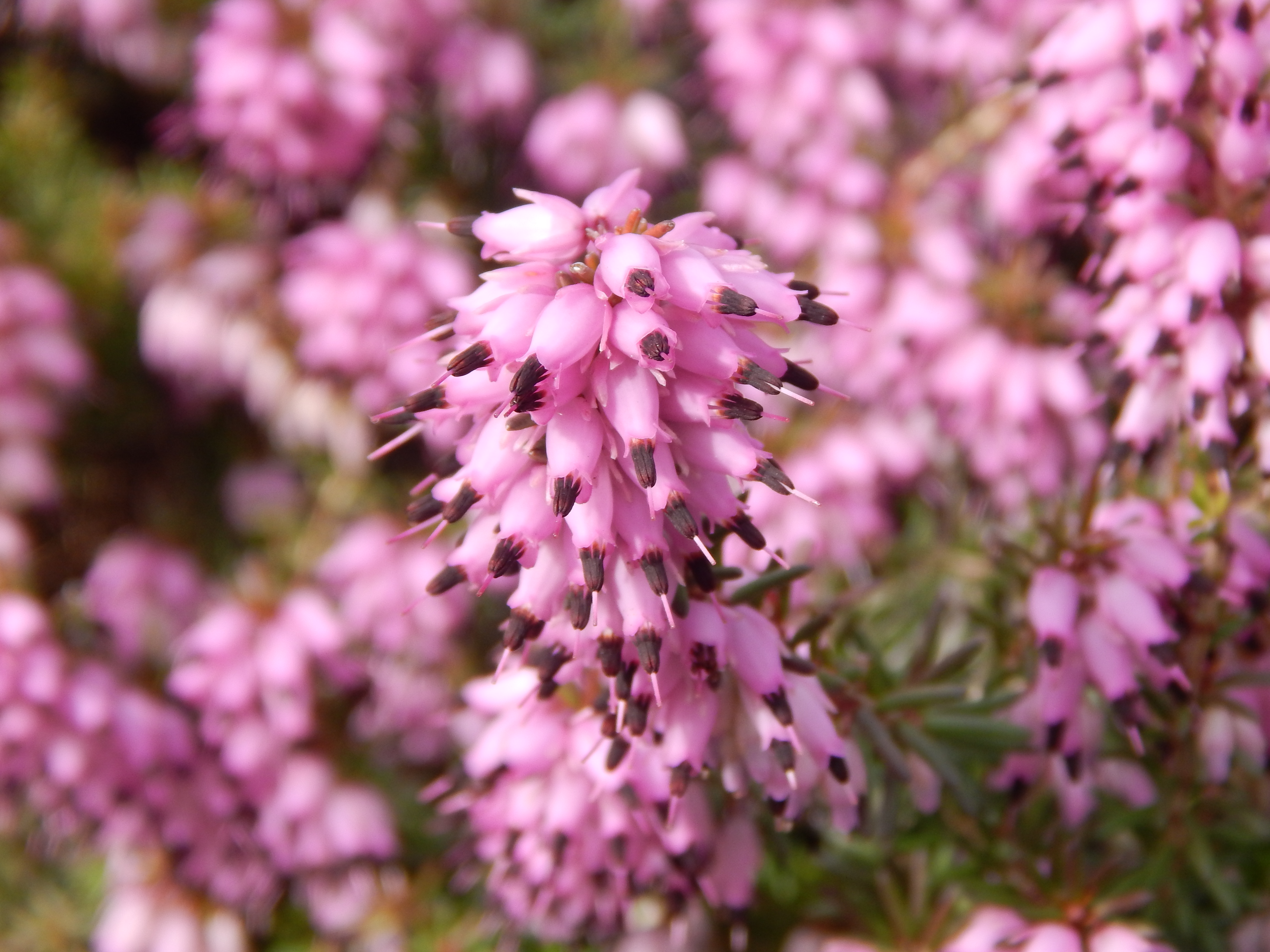
- Erica lusitanica is larger, growing to about two metres, with large numbers of tiny white flowers. It also flowers in winter and spring.
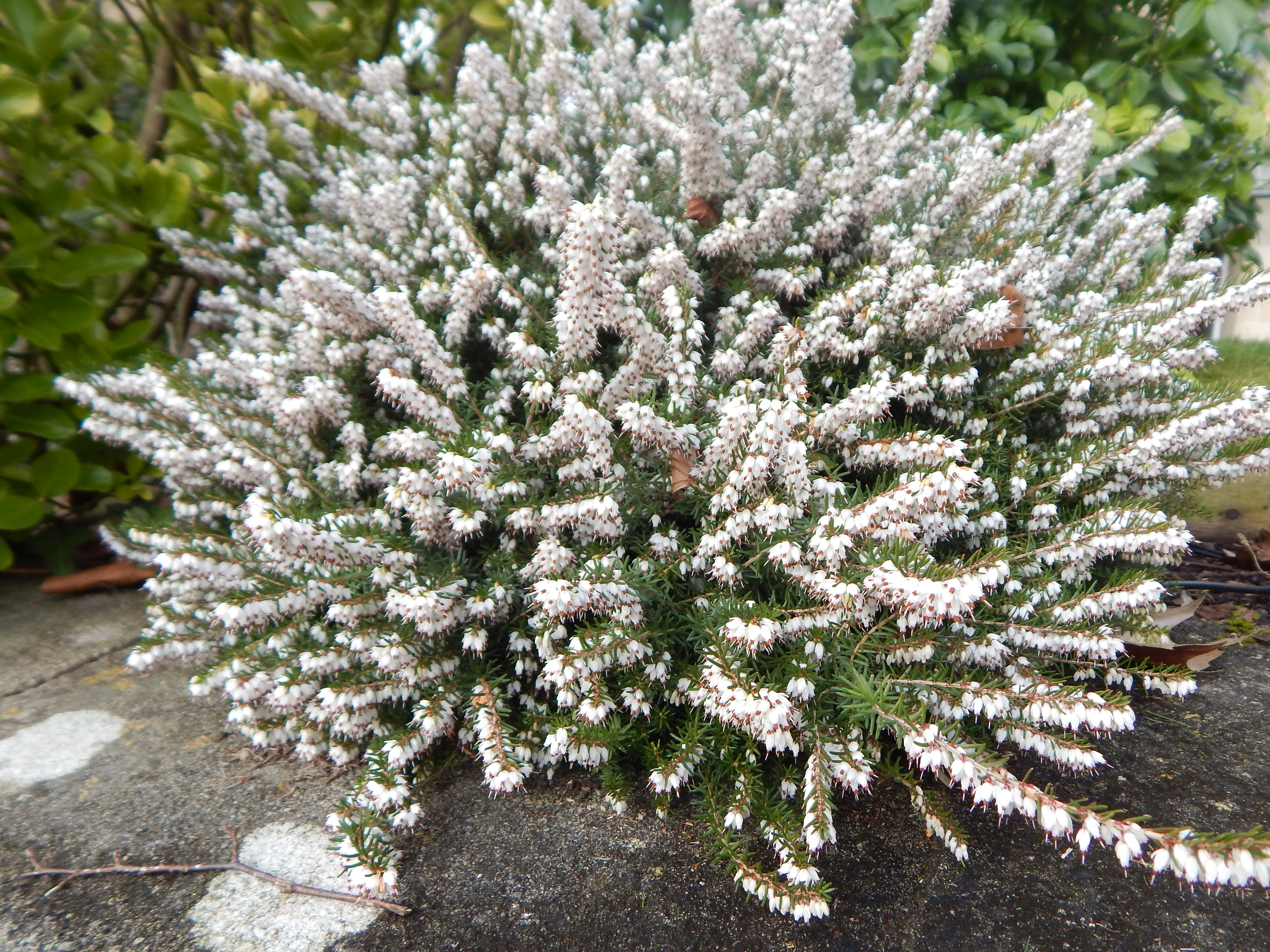



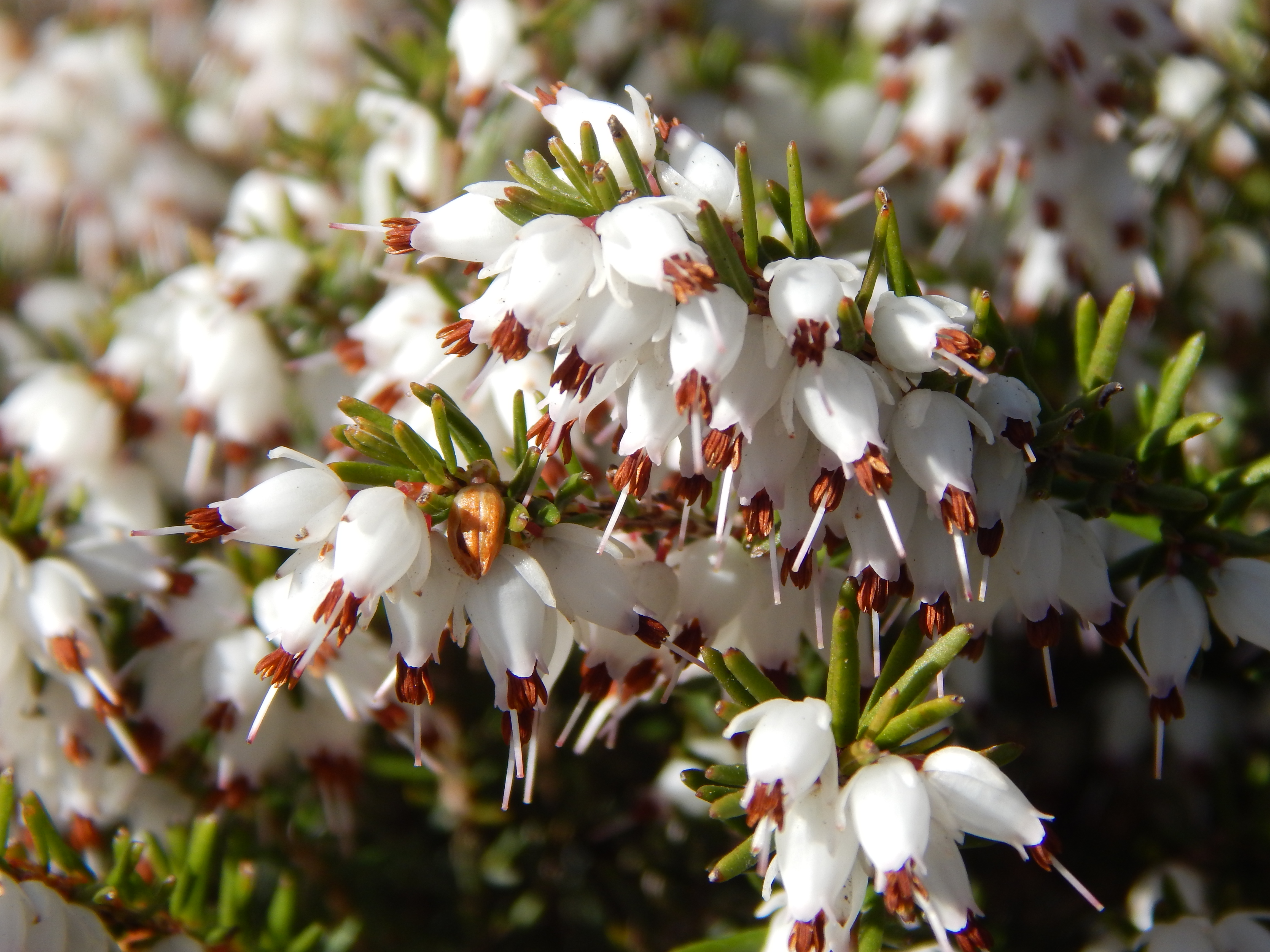
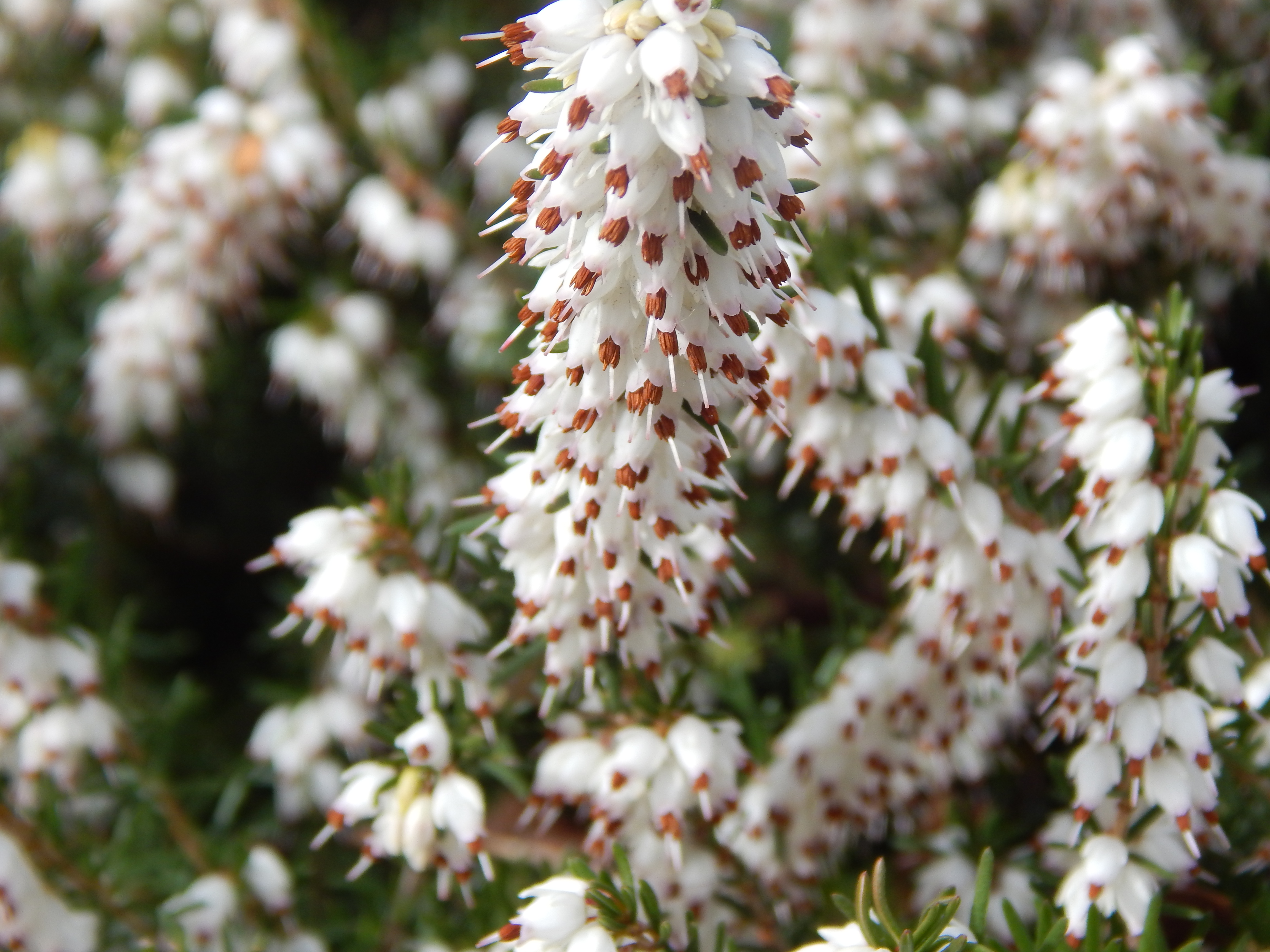

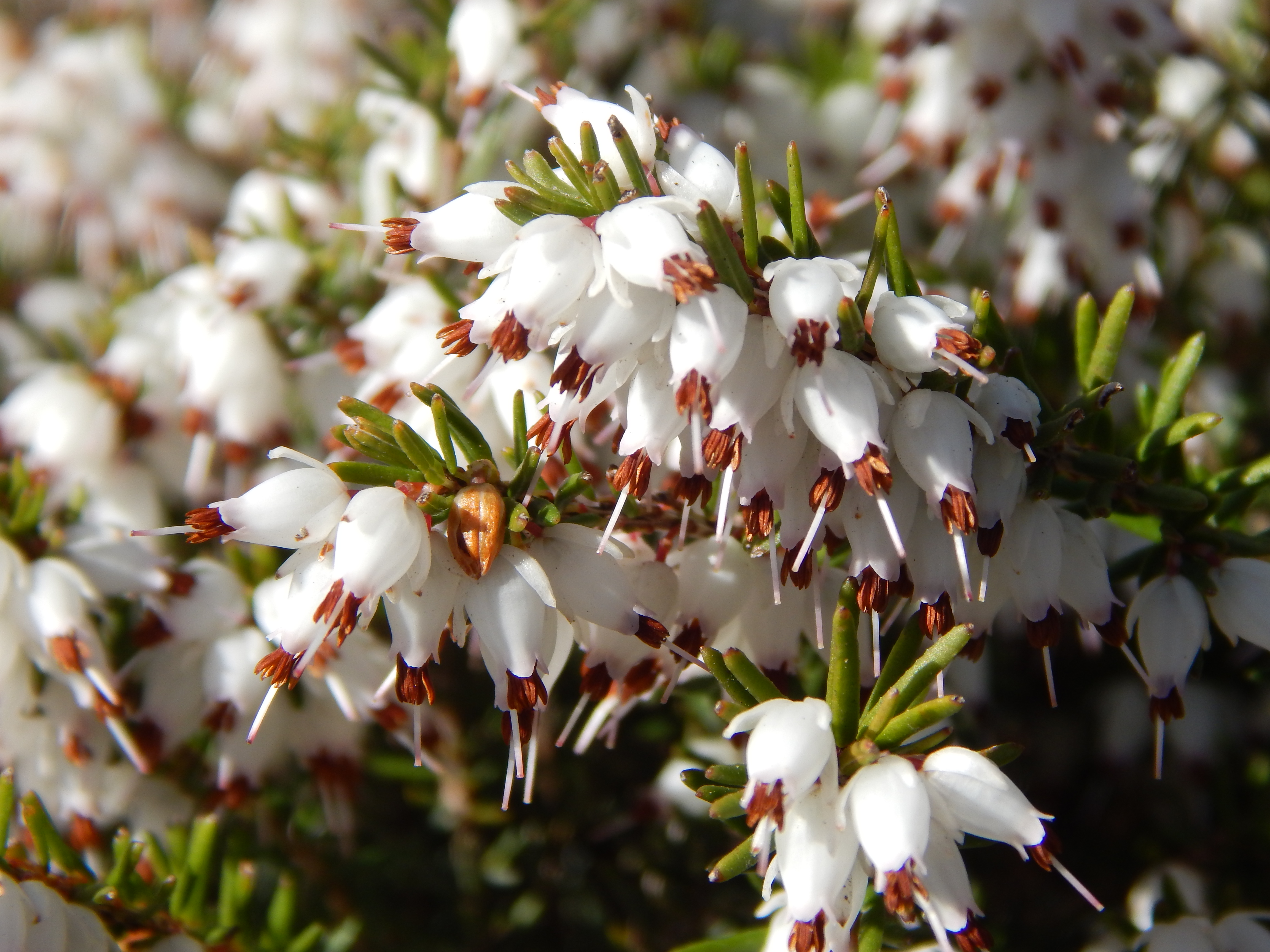
- Calluna vulgaris is often seen in the wild and forms the kind of moorland that can be called heath. It may be managed by sheep, cattle or burning in grouse moors. It normally flowers from July to September.

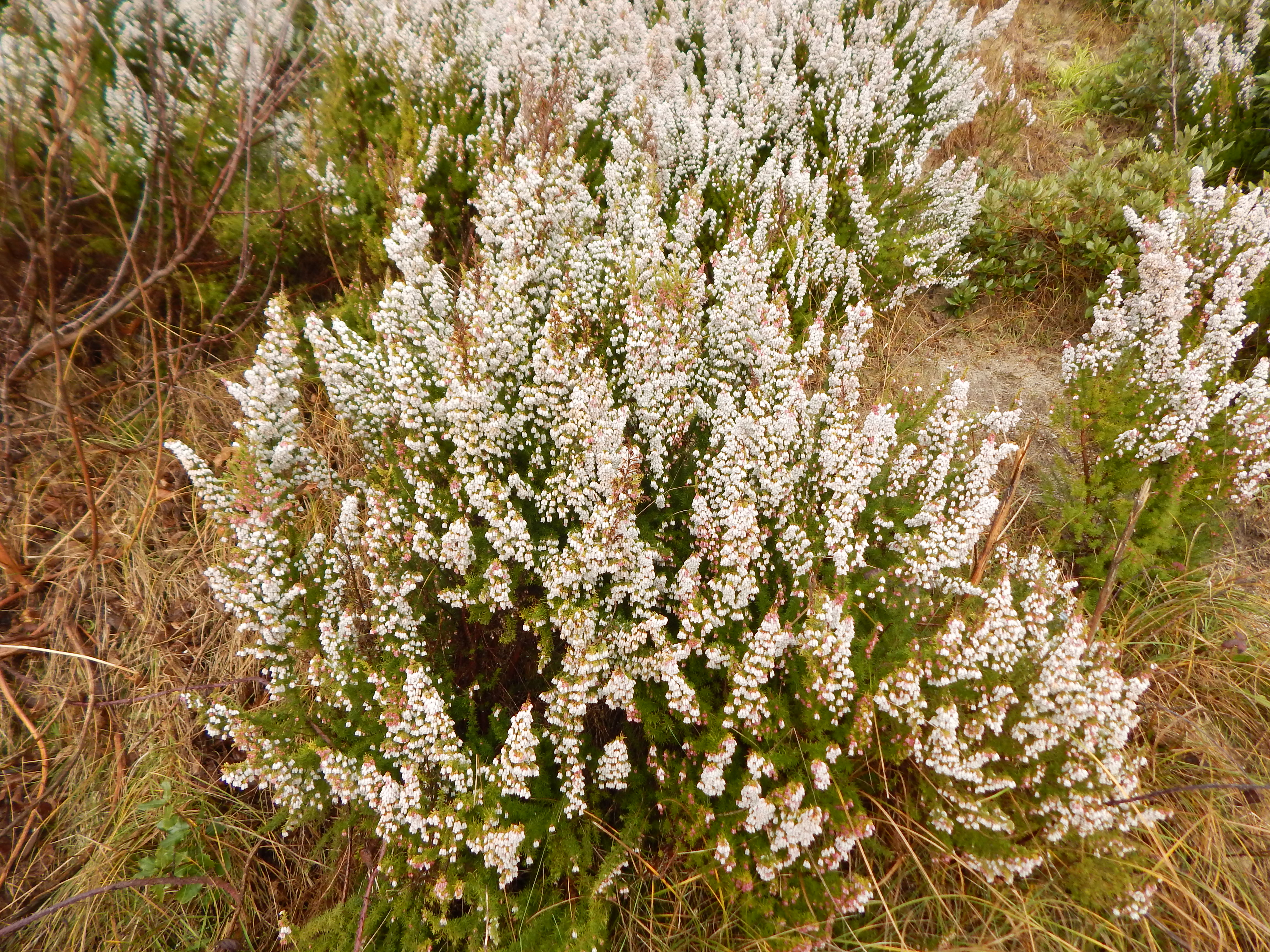


Habitat and use
Calluna vulgaris is native to Europe and has been introduced elsewhere. The Erica species are all introduced species in the UK.
Erica carnea is native to mountainous areas of central, eastern and Southern Europe. It typically grows in coniferous woodland or on stony slopes. Erica lusitanica is native to Portugal and Spain.
All three species (and other Erica species) are widely cultivated as garden plants and have naturalized in many places.
See also
The nearest relatives of these plants do not look similar to them. The family Ericaceae includes Cranberry, Blueberry and Rhododendron (which includes what we know as Azalea) none of which will appear in this blog.
